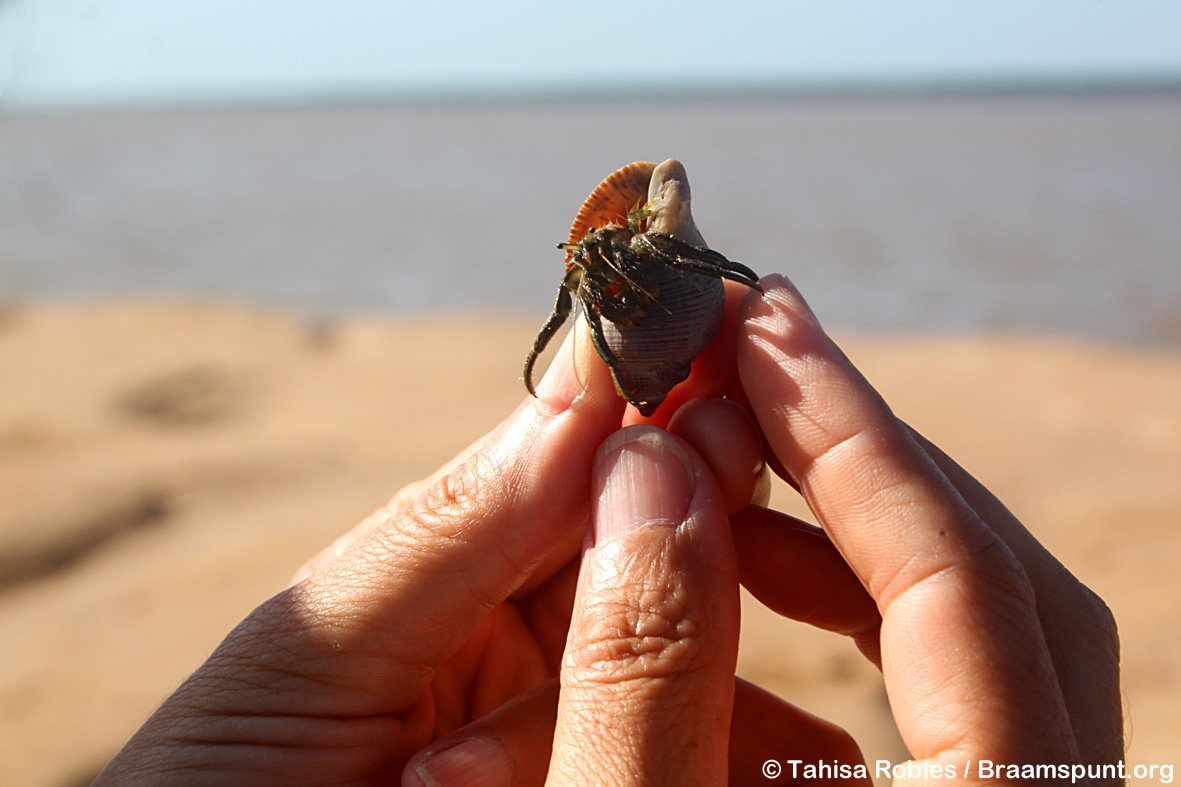
On some days, like 18th August 2013, you can find hundreds of hermit crabs on the beach. They usually sit piled close to each other on a piece of driftwood or are nestled among other shells along the shore. Contrary to what their name suggests, hermit crabs don't like to be alone. They thrive in groups. When collecting gastropod shells it is very important to check if there's really no one in there!
Unlike true crabs, hermit crabs have soft, vulnerable bodies that need protection. For that purpose they will forage for shells left by other animals, and will switch homes when they grow bigger. If shells aren't available, they'll carry around bits of wood or even plastic bottle caps to protect themselves. Hermit crabs are scavengers. There are around 1100 species of hermit crabs and most species are nocturnal. They vary in size from a few millimeters to as large as a big coconut and have a lifespan of 12 to 70 years! The shell-less hermit crab Birgus latro (coconut crab) is the world's largest terrestrial invertebrate (wikipedia.org, 2014).
Please do not support the hermit crab pet trade. Leave them where they belong: in the wild!











